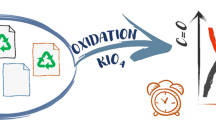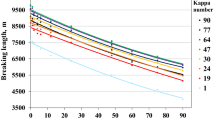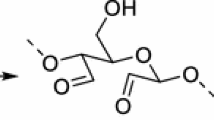Abstract
Vikane™ (sulphuryl fluoride) is a commercial fumigant[1] which is used for the control of pests in museum collections. This paper summarizes the results obtained through an investigation of the effect of Vikane™ on twenty-five paper and textile samples. Samples chosen were representative of artifacts present in North American collections (cotton, linen, jute, and wood pulp fibres, from 1622 to present).
The effect of the fumigation treatment has been evaluated by chemical and physical analyses: (1) Acidity — surface pH, cold extracted pH, total acid (iodometric titration), (2) Oxidative and Hydrolytic Degradation — viscometric average degree of polymerization, carbonyl content (hydrazone derivatization), (3) and Fumigant Residues (specific ion electrode). Analysis of unfumigated and fumigated samples was carried out before and after accelerated ageing (70°C and 50% relative humidity) in order to estimate the long term stability of fumigated samples.
The data obtained show that commercial grade Vikane™ degrades cellulosic and ligneous fibres. A second set of experiments on two fibre types using a new experimental grade of Vikane™ gave significantly less degradation. The presentation of this work will concentrate upon a general scientific interpretation of results.
It is anticipated that the conclusions will be applicable to a broad range of artifacts.
Similar content being viewed by others
References
Vikane™ is a product of the Dow Chemical Company.
Nan-Yao Su and R.H. Scheffrahn, “Fumigant Efficacy of Sulfuryl Fluoride Against Four Beetle Pests of Museums (Coleoptera: Dermestidae, Anobiidae)”, Final Report to the Getty Conservation Institute, January 10, 1989.
M.R. Derrick, H.D. Burgess, M.T. Baker and N.E. Binnie “Sulfuryl Fluoride (Vikane): A Review of Its Use as a Fumigant”, in press, Journal of the American Institute for Conservation, spring, 1990.
Requests for a copy of the annotated bibliography should be sent to: Getty Conservation Institute, Scientific Department-Vikane Bibliography, 4503 Glencoe Avenue, Marina Del Rey 90292.
H.D. Burgess and N.E. Binnie “The Development of a Research Approach to the Scientific Study of Cellulosic and Ligneous Materials”, in press, Journal of the American Institute for Conservation, fall, 1990.
Personal communication from J. Druzik to H.D. Burgess, August 31, 1989.
D. Erhardt, D. von Endt and W. Hopwood in The American Institute for Conservation of Historic and Artistic Works: Preprints of Papers Presented at the Fifteenth Annual Meeting, Vancouver, British Columbia, Canada, May 20-24, 1987 pp. 43-55, 1987; R.L. Feller, ibid., pp. 56-67.
E.L Graminski, E.J. Parks and E.E. Toth in Durability of Macromolecular Materials, editor R.K. Eby, ACS Symposium Series 95, Washington, DC, 1979, pp. 341-355.
Pulp and Paper, Chemistry and Chemical Technology, Third Edition, edited by J.P. Casey (Wiley-lnterscience, New York, 1980) pp.710-712.
R. Johnston-Feller and C.W. Bailie in IIC Preprints of the Contributions to the Washington Congress, Sept. 3-9, 1982, edited by N.S. Brommelle and G. Thomson (The International Institute for Conservation of Historic and Artistic Works, London, 1982) pp. 180-185.
“Standard Test Method for Breaking Load (Strength) and Elongation of Yarn by the Single-Strand Method”, ASTM D 2256-80 (1980).
“Hydrogen Ion Concentration (pH) of Paper Extracts — Cold Extraction Method”, TAPPI Standard T 509 os-77 (1977).
“Surface pH Measurement of Paper,” TAPPI Standard T 529 om-82 (1982).
G.M. Nabar and C.V. Padmanabham, C.V. Proc. Indian Acad. Sci., 31A, 371 (1950).
I. Slavik, M. Pasteka and M. Kucerovs, Svensk Papperstidning, 70, 229 (1967).
W.B. Achwal and R. Murali, J. Applied Poly. Sci., 30, 4297 (1985).
H.S. Blair and R. Cromie, J. Appl. Polymer Sci., 16, 3063 (1972); 27, 205 (1977).
I.N. Ermenlenko and G.N. Savastenko,. Analytical Chem. USSR, 21, 81 (1966).
P.M. Doty and H.M. Spurlin, High Polymers Vol. V. Cellulose and Cellulose Derivatives, Part IV (2nd Edition), edited by E. Ott, H.M. Spurlin and M.W. Grafflin (Interscience, New York, 1955), 1133-1188.
S.H. Zeronian in Cellulose Chemistry and Technology, Proceedings of the American Chemical Society, New York, 1976, ACS Symposium Series, edited by J. Arthur Jr. (American Chemical Society Proceedings, 48, 1977), 189-205.
Acknowledgements
The authors would like to thank J.C. McCawley, Chief, Conservation Processes Research (CPR), CCI for his help and encouragement during this project. The Canadian Conservation Institute acknowledges the financial assistance of the Getty Conservation Institute in carrying out the Vikane™ project.
Author information
Authors and Affiliations
Rights and permissions
About this article
Cite this article
Burgess, H.D., Binnie, N.E. The Effect of Vikane™ on the Stability of Cellulosic and Ligneous Materials — Measurement of Deterioration by Chemical and Physical Methods. MRS Online Proceedings Library 185, 791–798 (1990). https://doi.org/10.1557/PROC-185-791
Published:
Issue Date:
DOI: https://doi.org/10.1557/PROC-185-791




